Summer Walking Tips
Make the most of the sunny weather and walk Britain's trails safely with our hot weather walking tips.
Summer Walking Tips
https://www.contours.co.uk/summer-health-advice
by Nicky Jaquiery
Walking is one of the best activities around for our health and wellbeing, and walking in the summer months provides an additional boost. Sunlight increases our levels of Vitamin D, an essential vitamin for bone health, and is hugely important for our mental health. If, like me, you don’t particularly like the long, dark days of winter, you’ll look forward to the long, light days of summer and being outside when the sun is shining.
However, while some sun is good for us, too much sun can have the opposite effect and be damaging to our health. With the summer holiday season upon us, now is a good time to remind ourselves of some basic precautions to take when walking in the sun.
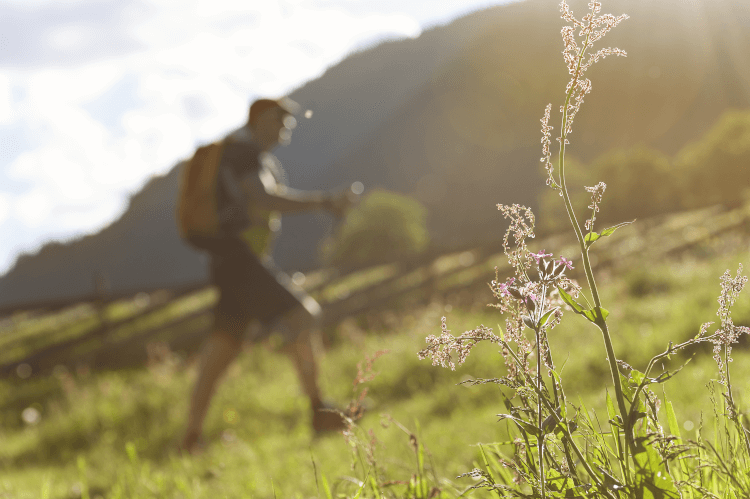
With the increase in popularity of walking and other outdoor activities, there has been a rise in cases of skin cancer.
To reduce our risk of skin cancer, we all know to avoid exposure to the sun in the hours before and after midday, but if you’re a keen walker out on a route that will take a full day to complete, there’s no practical way to retreat indoors.
Fortunately, there are some simple steps that you can take to protect yourself.
Shade is your best protection from the sun. However, unless you’ve planned a walk through large sections of woodland, you won’t be able to guarantee that you’ll have shade while out on your walk. Choosing the correct clothing is the next line of defence.


Tightly woven and loose fitting clothes are best. Nowadays, UV-protective clothing is available that is designed to protect you against UV radiation, which can cause sunburn and long-term skin damage such as skin cancer.
I would also advise you to invest in a wide-brimmed hat as this will shade your face, ears and the back of your neck. I find a lightweight scarf works well around my neck as further protection. Also, it’s useful to have a scarf to soak in a stream and wrap around your neck to cool you down if it’s really hot.

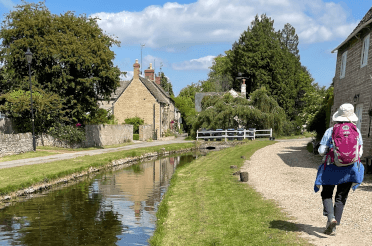
Consider wearing sunglasses, but make sure you choose ones that have 99-100% UV-A and UV-B protection, which will help to reduce the sun damage to your eyes.
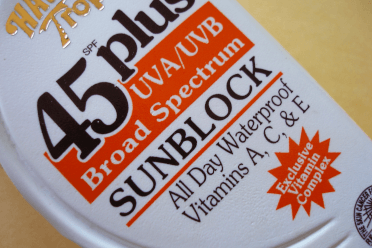
On those areas of the body that are exposed to the sun, apply a broad-spectrum sunscreen and re-apply it frequently, especially if you’re sweating a lot as you’re walking.
If I’m wearing shorts and a t-shirt, I find that the backs of my knees and arms are more prone to sunburn, so pay particular attention to these areas.
Take particular care on your walk if it’s cloudy and windy, since you’re less likely to feel the effects of the sun and are more likely to be caught out with sunburn. If you are sunburnt, drink plenty of fluids to avoid dehydration and stay out of the sun as much as possible.
If you’re planning a walk on a hot day, you’ll need to seriously consider how much fluid to take with you and where you’ll be able to replenish your water supply. Most of us don’t drink enough water ordinarily, and so if it’s hot and the walking is strenuous, it’s easy to underestimate how much fluid you’ll need.
The recommendation is to drink 6-8 glasses of fluid a day just for everyday activity. On your walk you’ll need to judge how much to drink, depending on how hard you’re working and how much you’re sweating.
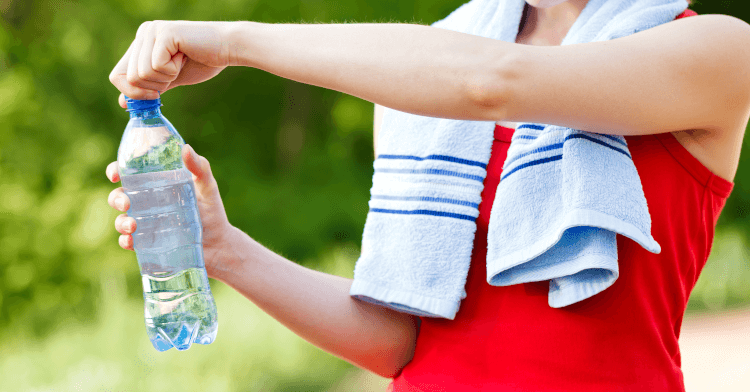
When you sweat, you lose electrolytes – otherwise known as salt – and unless you replace this salt through food or drink you’ll become dehydrated. So, if it’s really hot you may want to consider taking a sports or electrolyte drink to replace the salts that you lose. For convenience you can buy electrolyte tablets in different flavours that can be popped into your water when required.
I usually make my own electrolyte drink by adding fruit juice or squash to water and a pinch of salt, and then I carry a tube of electrolyte tablets with me for when I need to replenish my water.
If it’s hot you probably won’t be able to carry all the fluid that you’ll need. Carrying too much fluid anyway will just weigh you down and make you sweat more, meaning that you’ll need to drink more!
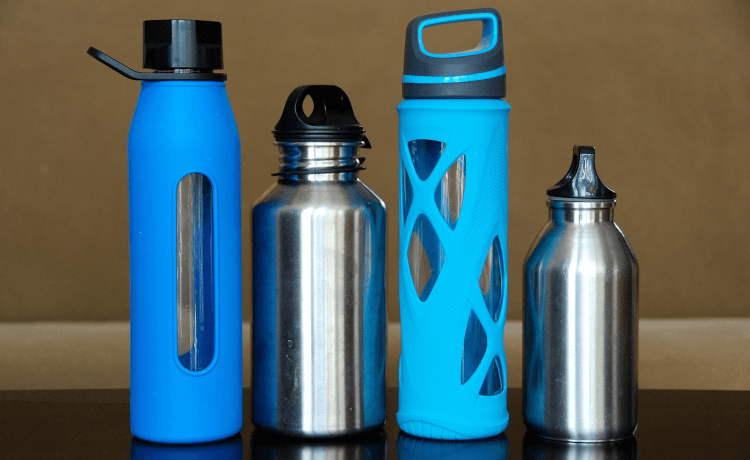
One option is to take water from streams, but it’s not recommended to do this unless you’re able to purify the water. As you probably won’t have a stove with you to boil water, I suggest you carry water-purifying tablets. These are lightweight and fast-acting, so if you do run out of water you can take water from a stream, add a water-purifying tablet and know that the water will be safe to drink within a matter of minutes.
Be on the lookout for the early signs of dehydration, which include headaches, dry mouth, tiredness, passing urine less often than normal and urine that is dark coloured and strong-smelling. If you are dehydrated, drink plenty of fluids.
You may find that drinking a rehydration solution will help. As you lose sugar and salts in addition to water when you’re dehydrated, a rehydration solution will enable you to regain the right balance of body fluids and the symptoms of dehydration should disappear.
I always carry a few sachets of rehydration solution in my first aid kit. One simple piece of advice that we’re used to hearing, but don’t always act upon, is not to wait until you’re thirsty before you have a drink. Follow this advice and you may never need to use your rehydration solution, but it’s always good to have it just in case.
Dehydration can lead to heat exhaustion and even heat stroke, so you need to be aware of the symptoms, especially if it’s really hot.
The symptoms of heat exhaustion include thirst, tiredness and possibly muscle cramps, making walking difficult. The best course of action is to stop walking, find a shaded spot and drink plenty of water along with a rehydration solution or something else that will replace the salts you’ve lost.
If heat exhaustion is not treated it can develop into heat stroke, which is when the body’s core temperature rises dangerously high. In addition to the symptoms associated with heat exhaustion, if someone starts to exhibit increased breathing, faster pulse, tiredness and confusion, you need to call for help immediately.
Be aware that heat stroke can develop very quickly and the consequences can be fatal. So it’s important that, after alerting emergency services, you follow these steps.
Your best defence against heat stroke is to be careful when walking in hot weather, of course, so that it does not develop in the first place. Use the tips outlined above to keep your summer walk safe and memorable.
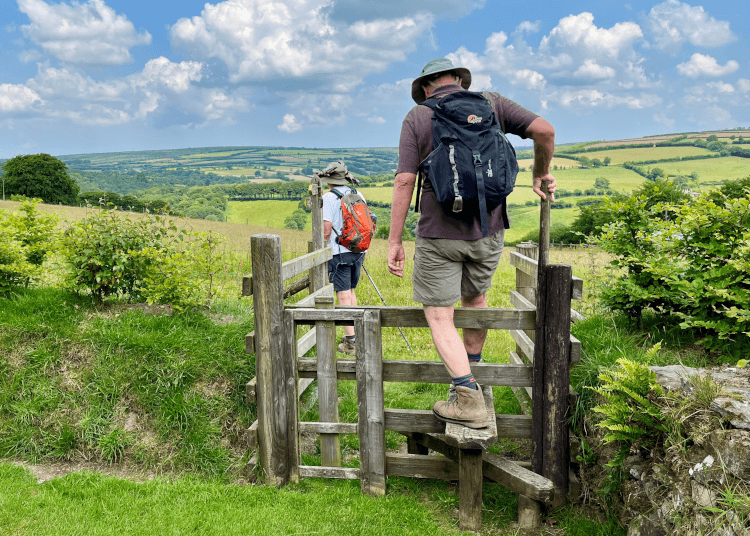
Outdoors Enthusiast
Nicky Jaquiery is a frequent contributor to the Contours Holidays blog, tapping into her vast experience out in the countryside as walker and runner to produce thoughtful and practical articles.